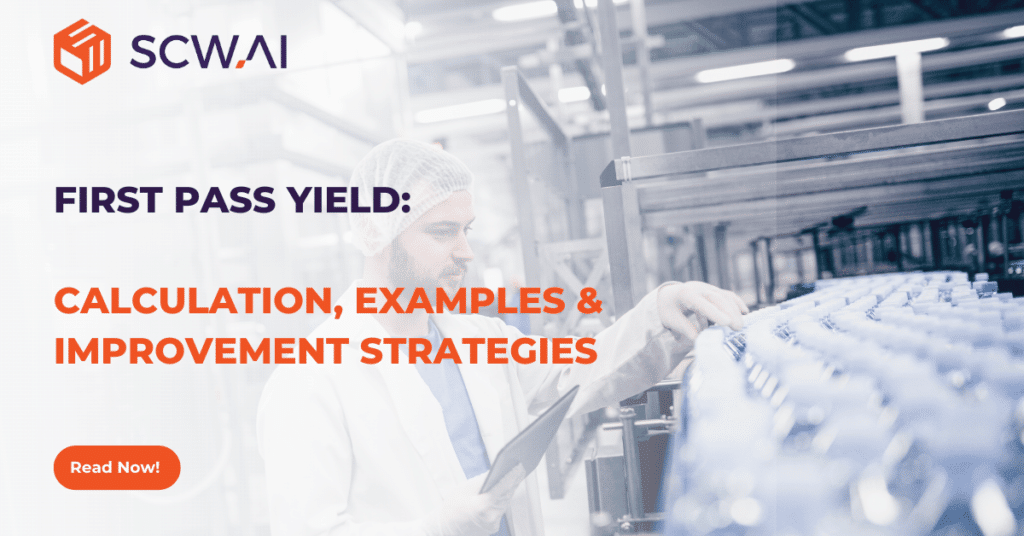In recent decades, manufacturers have embraced lean six sigma strategies to boost efficiency and profitability. While traditional lean manufacturing has delivered significant value, the integration of digital factory transformation has the potential to double the cost reduction achieved through lean activities, as highlighted by Bain and Company.
Despite the proven profitability of adopting digital lean strategies, McKinsey reports that almost 99% of manufacturers are yet to embrace the required level of digitization for successful implementation. In response to this challenge, this article will begin by elucidating the concept of digital lean, offering insights into its potential. Then, it will introduce the top four technologies that top management can adopt to improve productivity. Finally, the article will highlight best practices for digital lean initiatives, as well as providing information on how SCW.AI can assist manufacturers in this process.
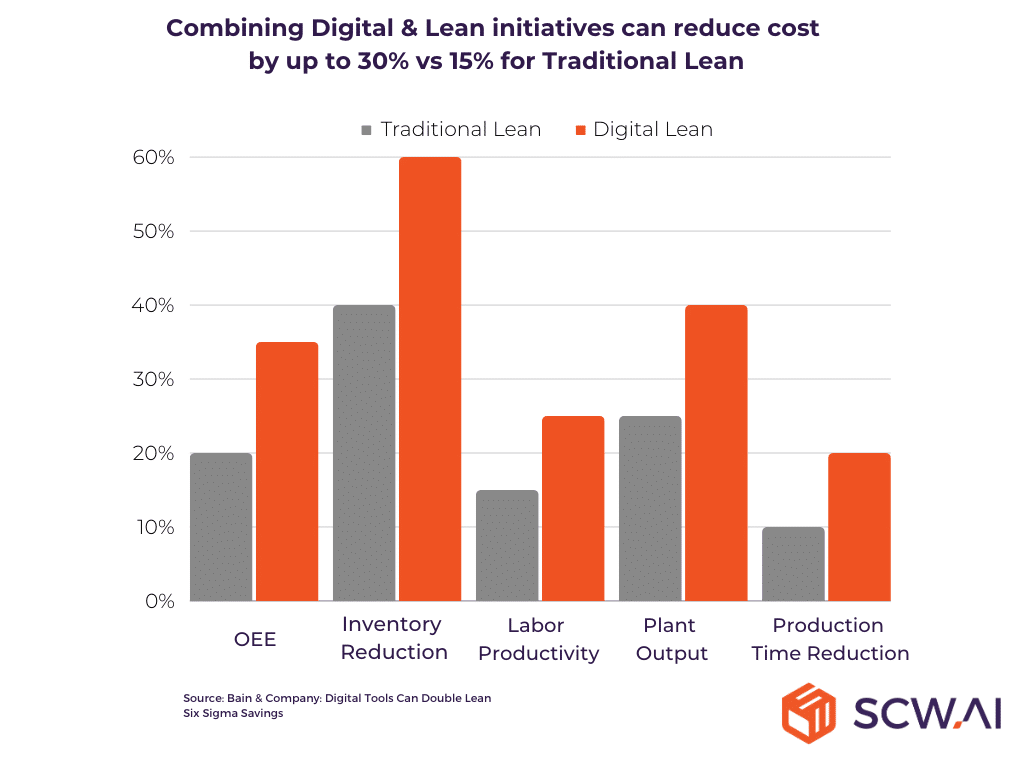
What is Digital Lean?
Digital Lean, also known as Lean 2.0, can be defined as the augmentation of traditional lean activities with technologies such as IoT, AI, digital twins, and more to increase factory visibility, productivity, and agility.
To illustrate the concept, consider an example of lean activities before and after digitization. Total Productive Maintenance (TPM) is a lean strategy aimed at minimizing waiting waste. In traditional lean, manufacturers adopt preventive maintenance as part of TPM initiatives, where maintenance teams schedule maintenance activities before equipment failure occurs. However, in preventive maintenance, the effectiveness is often dependent on the experience of the maintenance team.
In the era of digital lean, predictive maintenance replaces preventive maintenance. Machine Learning (ML) algorithms predict downtime of machines before they occur and automatically schedule maintenance work orders. This data-driven approach helps factories reduce both maintenance costs and unplanned/planned downtimes per Deloitte.

How Does Digital Lean Generate More Value Than Traditional Lean?
The rationale behind this lies in the improved factory visibility and automation, enabling companies to more effectively identify bottlenecks and generate ideas that target the seven wastes that lean manufacturing aims to tackle.
Digital lean activities ensure round-the-clock, high-quality and automated:
- Data collection
- Data display
- Data interpretation.
Thus, decision-makers, whether human or AI/ML models, are alerted by real-time notifications to address unexpected downtimes or inefficiencies. Similarly, chronic bottlenecks become visible thanks to historical factory data collection and interpretation. Overall, factories can minimize the seven wastes more effectively.
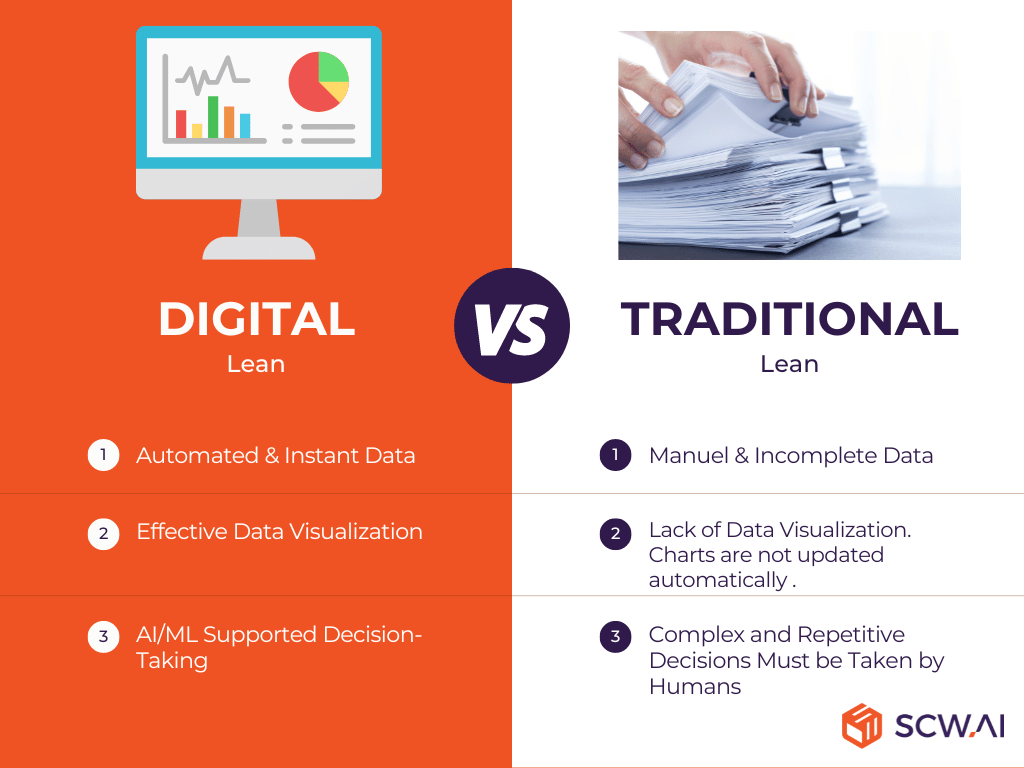
You can read our ‘World Class OEE in Pharma: A Benchmarking Analysis for 2024‘ article to discover how digitization aids pharmaceutical companies in identifying and addressing bottlenecks more effectively, leading to an impressive increase in overall equipment effectiveness (OEE) scores from 37 to over 60.
Top 4 Technologies to Utilize for Digital Lean Practices
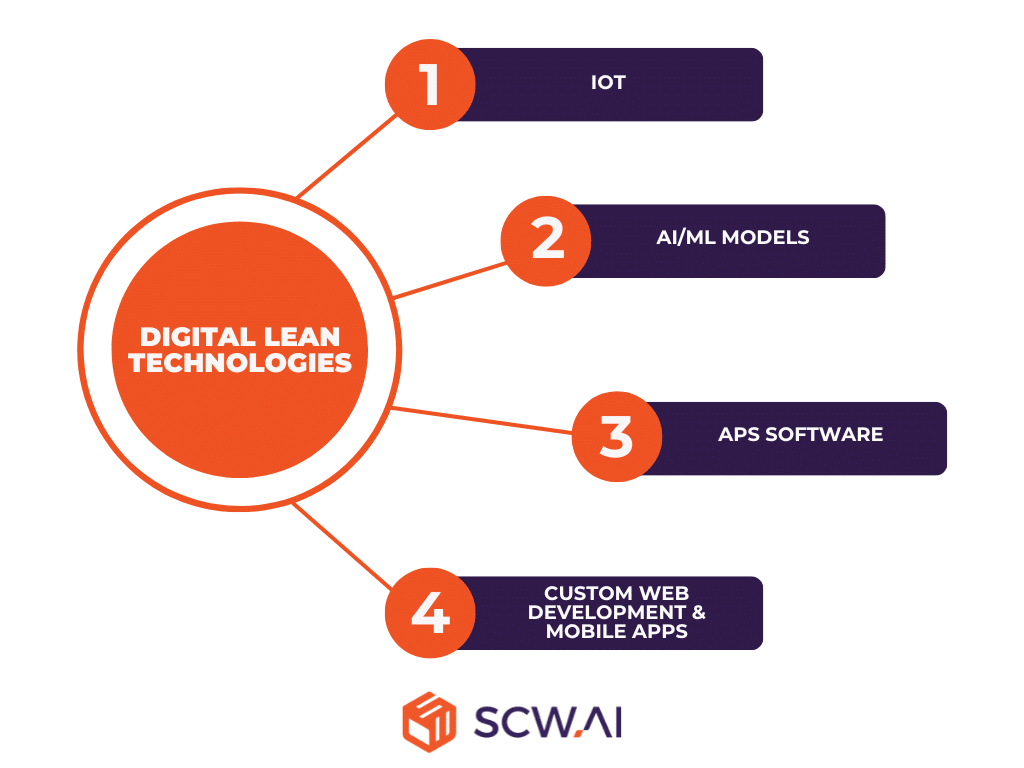
1. IoT
The integration of IoT devices with PLCs allows for the effortless collection of high quality real-time data on many production-related operational indicators, including:
- Temperature and humidity levels in factories
- Heat of equipments
- Electric current
- Speed of production
- The total quantity of production
- Number of scraps.
- Worker check-ins at specific production lines (RTLS system) and more.
Consequently, it is evident that IoT devices play a pivotal role in advancing both factory visibility and the precision of production tracking.
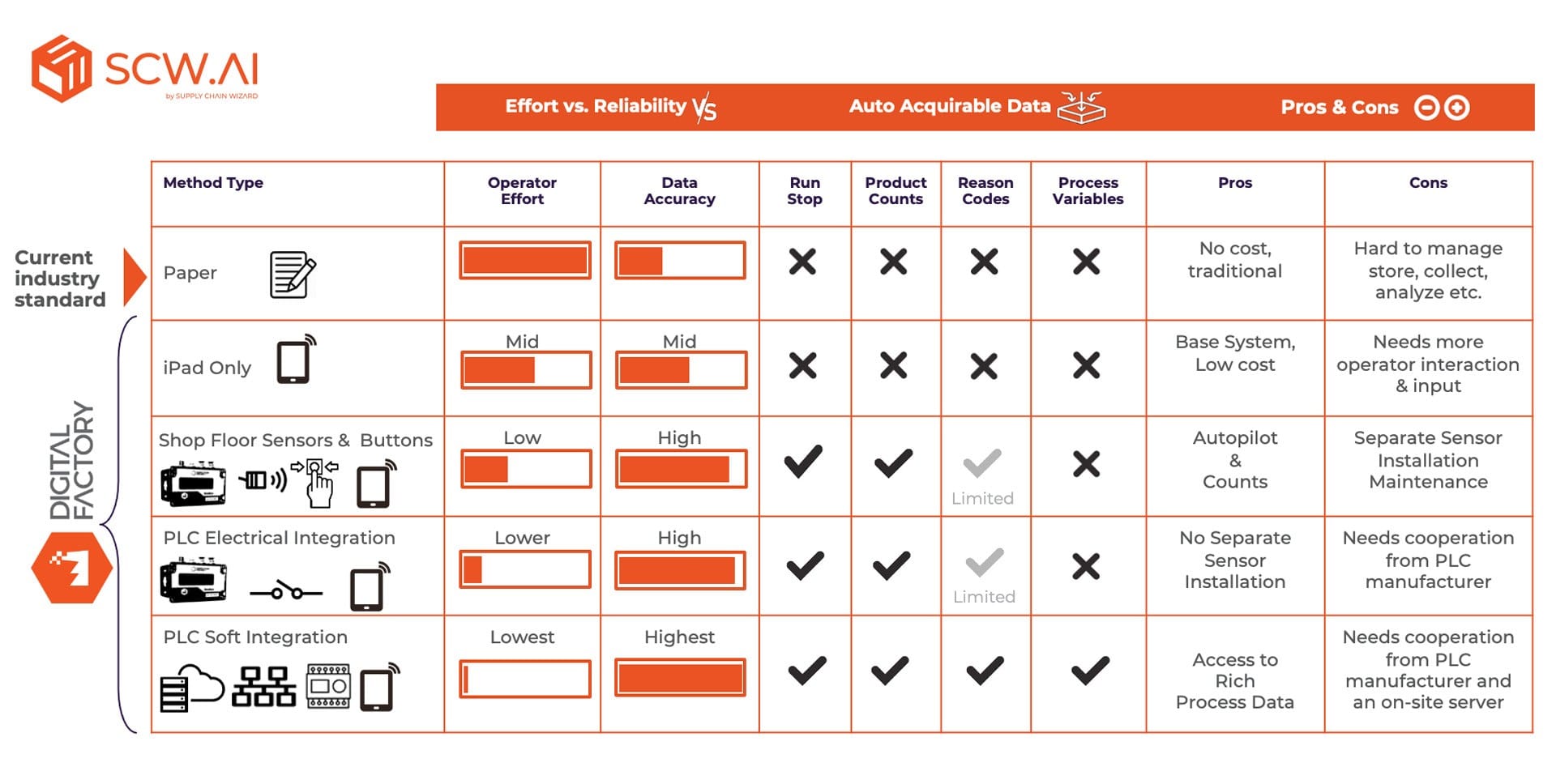
2. AI/ML Models
AI and ML models have variety of use cases for pharmaceutical manufacturing, which are as follows:
2.1. ML-driven Predictive Maintenance
As previously discussed, algorithms are able to anticipate equipment failures before they arise and alert employees to take preventative measures (see image below). Thus, manufacturers are able to minimize downtime and save maintenance costs by utilizing ML driven predictive maintenance.
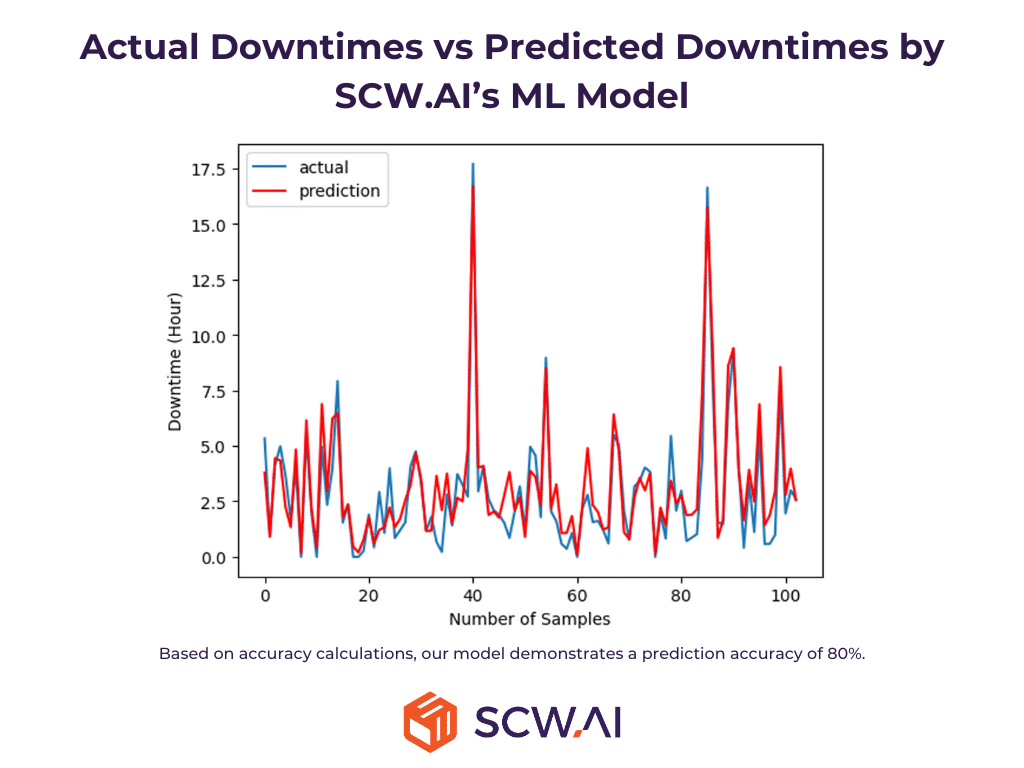
2.2. Factory Monitoring with Computer Vision Models
Data from the shop floor can be gathered using computer vision models to keep an eye on the manufacturing lines. With the use of data analysis tools, these models are able to anticipate production line state over time based on vibration, electric current, and information obtained from manufacturing equipment.

2.3. Realistic Simulations with Digital Twins
Factory managers can easily allocate work orders to various production lines to increase schedule adherence by creating lifelike scheduling simulations via a digital twin of a factory. Similarly this technology can be utilized to train laborers by taking no operational risk.
3. Advanced Planning and Scheduling Software
Advanced planning and scheduling (APS) systems enhance manufacturers’ work order management by automating the allocation of work orders to specific lines and laborers. When augmented with AI models, these tools employ algorithms to generate more effective schedules, making factories more agile and adaptable to different business objectives, including:
- Just in time scheduling (JIT)
- Cost reduction
- OTIF maximization
- Makespan minimization
4. Custom Web Development and Mobile Apps
Automated dashboards play a crucial role for manufacturers by facilitating timely responses to bottlenecks. Custom web development and mobile apps ensure the seamless and continuous updating of company reports with real-time data. This dynamic process empowers executives with the most up-to-date information on the current state of production, enabling swift decision-making and proactive problem-solving.
SCW.AI views mobile apps as essential, considering that individuals carry their phones round-the-clock. This ensures that responsible personnel can receive timely notifications via mobile apps in case of urgent events (see images below).
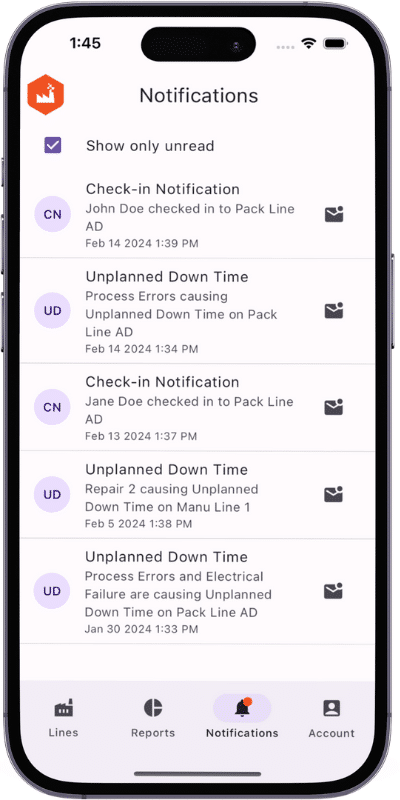
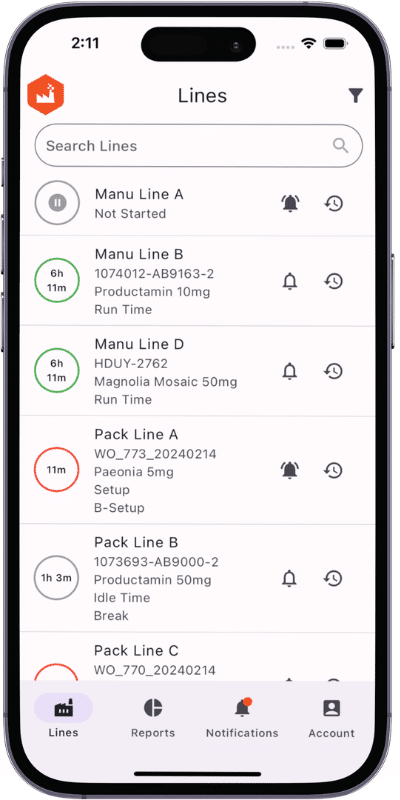
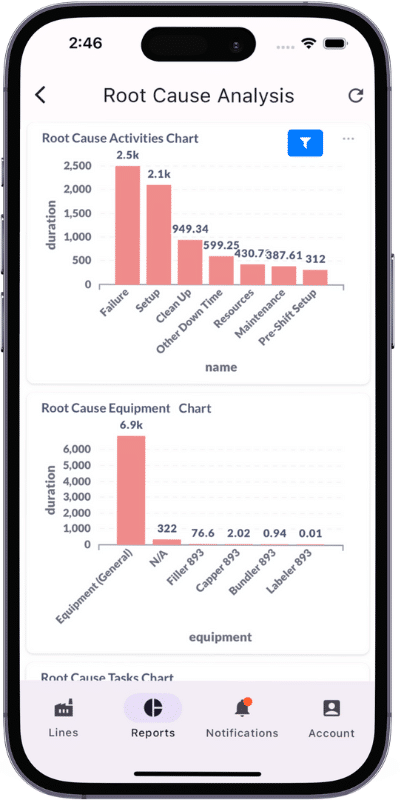
Now we will continue with 5 best practices that help manufacturers for smooth digital lean transformation.
5 Digital Lean Best Practices
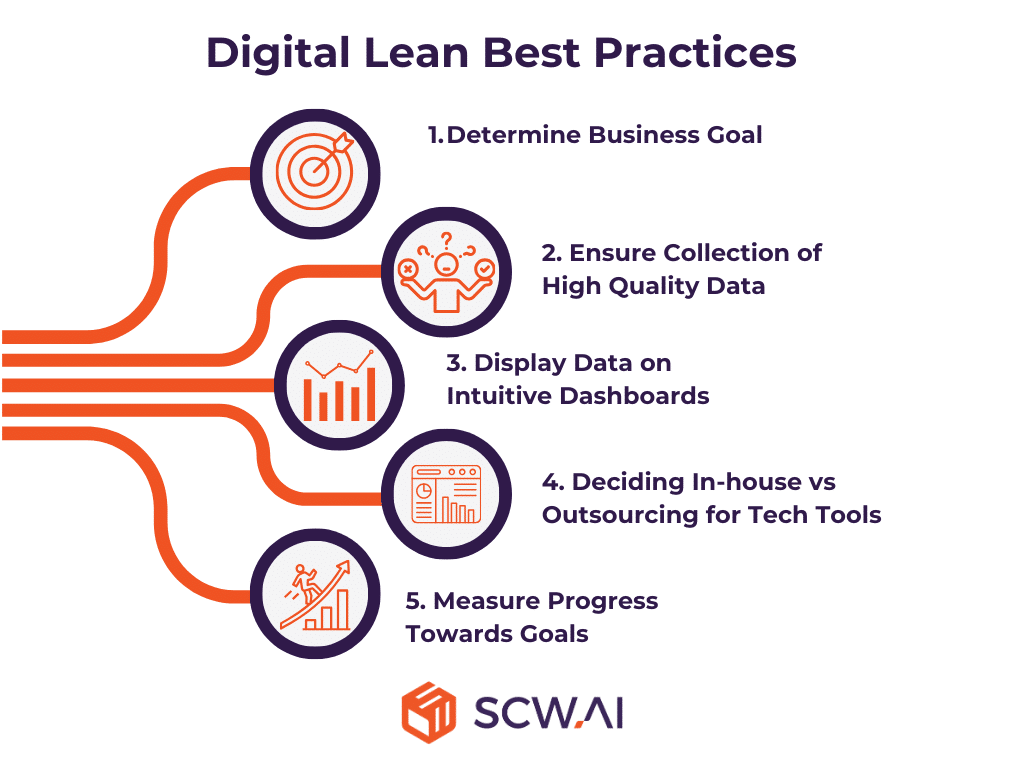
1. Determine Business Goal
Digitization should align with specific business achievements, whether it involves reducing costs, lead times, improving OTIF scores, profitability, or more. When setting business goals, it is advisable to utilize the SMART framework, ensuring that the goal is:
- Specific
- Measurable
- Achievable
- Relevant
- Time-based
As an illustration, a manufacturer may set a strategic objective to achieve a 20% reduction in the cost of goods sold within the next 12 months. To effectively gauge the success of lean 2.0 initiatives, it is imperative to pinpoint key performance indicators (KPIs) that align with and support this goal. In the context of cost reduction, monitoring metrics like takt time, Overall Equipment Effectiveness (OEE), and cycle time can serve as invaluable tools in evaluating and quantifying the progress made.
2. Ensure Collection of High Quality Data
The collection of high-quality data serves as the backbone of any digital lean transformation. Whether the decision-maker is a human or an AI model, the interpretation of data relies on its accuracy and reliability.
High quality data is characterized by:
- Accuracy: Ensuring precision and correctness in the data.
- Real-time Collection: Gathering information promptly as events occur.
- Automatic Gathering: Employing automated processes (IoT, PLC, blockchain etc.) for data acquisition.
- Granularity: Access to comprehensive and precise data facilitates meticulous monitoring of the production process, enabling a granular examination from line to line, station to station, work order to work order, and activity to activity (including changeovers, runtime, maintenance, etc.).
- Continuity: Maintaining a continuous flow of data.
- Lack of Overlaps: Avoiding duplications or redundancies in the data.
3. Display Data on Intuitive Dashboards
Factory shop floors are dynamic environments where timely decisions can significantly impact the successful completion of work orders. In this context, dashboards fueled by real-time data play a crucial role. For example, by referring to a dashboard like the one below, manufacturers can promptly assess whether they are on track to complete a work order on time.

In the event of potential delays, executives can make swift decisions, such as implementing overtime work to ensure timely delivery.
4. Determine Your Strategy for Smart Factory Investments
Selecting an appropriate strategy for technology adaptation adds complexity to the initiation of a successful digital lean transformation. Manufacturers may choose to collaborate with technology vendors, academia, or leverage in-house capabilities to design technological solutions.
However, collaborating with vendors introduces the challenge of selecting the right partner from a multitude of options. Nonetheless, gaining insights from the digitalization strategies of manufacturers in 2023 can prove to be enlightening for organizations grappling with these decisions.
In 2023, technology vendors played an indispensable role as partners for manufacturers, with approximately 60% of them collaborating with providers to deploy lean 2.0 technologies, according to Deloitte. Alternative strategies, such as in-house development or acquiring competitors, were also considered. However, the prevailing approach among manufacturers is to collaborate with technology vendors.
This strategy is closely tied to the advantages of technology outsourcing, such as the reduced risk of unsuccessful digital transformation (utilizing a proven solution), scalability, affordability, and nullifying challenges for manufacturers associated with a need for technical personnel required for designing technological tools from scratch.

5. Evaluate Metrics to Measure Progress Towards Goals
As with any transformative initiative, monitoring and assessing the progress of your digital lean implementation is vital to ensure that it aligns with your business objectives. To effectively gauge the impact of your lean 2.0 initiatives, it is crucial to establish a routine for regularly checking manufacturing KPIs. While evaluating the metrics you can find new business opportunities or challenges which might need active change management or strategies.
How Can SCW.AI Assist Your Digital Lean Activities
SCW.AI’s Digital Factory Platform employs advanced cloud manufacturing solutions to guarantee scalable and affordable digital lean transformation to satisfy the particular needs of manufacturers. The following solutions are available on the platform:
- Visibility and Productivity Solutions: Dashboards and reports like Site View, Station View, Daily Performance Report, Changeover Analysis and more assist executives to minimize downtime and cost of good sales by making shop-floor visible.
- Paperless Quality Solutions: For pharmaceutical producers, we specifically build GMP-compliant documentation technologies like the Digital Logbook and Digital Batch Record to increase corporate compliance, and lower quality costs.
- Agile Planning Solutions: To enhance scheduling and maintenance tasks, our AI-driven Scheduler, Maintenance Performance Report, and OTIF Report, among others, provide crucial insights, line balancing and automation capabilities for manufacturers.
- IoT Hub: SCW.AI designs IoT tools called Hexbox for automating high quality data gathering from factories.
- AI Hub: To help manufacturers automate decision-making processes, SCW.AI also designs scheduling and predictive maintenance algorithms.
To discover more about lean 2.0 you can contact us.
To explore the capabilities of our Digital Factory Solutions and prepare your factory for 2024 and beyond, you can book a demo now!

